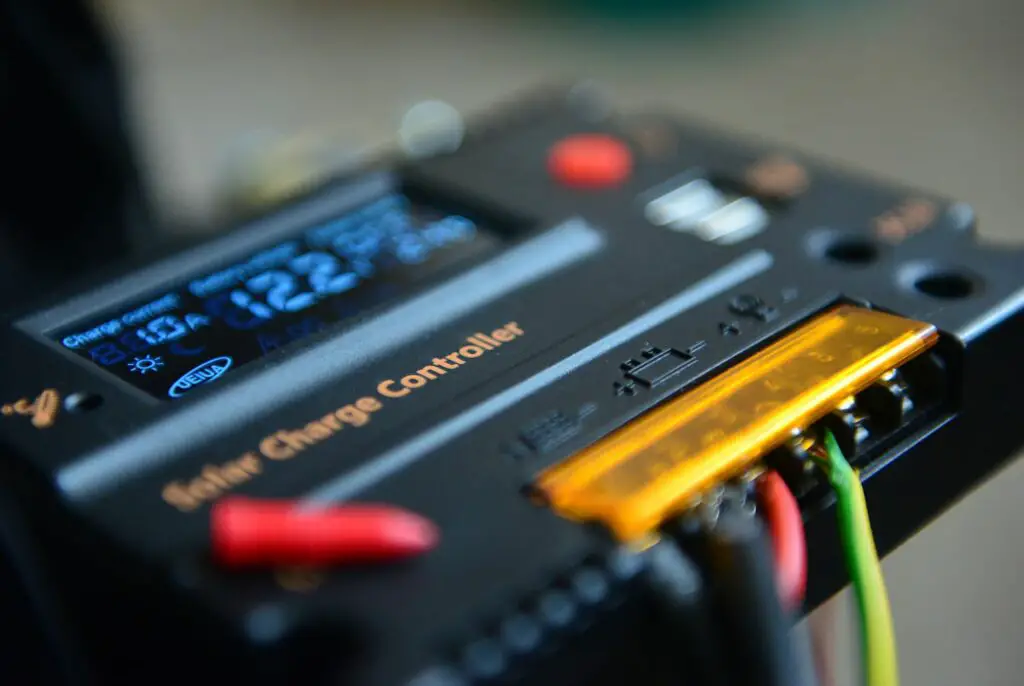If you use our links to purchase something, we may earn a commission. Learn more.
A charge controller, also known as a charge regulator, is a crucial component in a solar energy system, functioning primarily as a voltage and current regulator.
Its main role is to prevent the batteries in the system from overcharging.
The controller achieves this by regulating the flow of voltage and current from the solar panels to the battery.
Understanding the diverse features of solar charge controllers is key to optimizing solar energy utilization.
This article delves into the various features of solar charge controllers. These features of solar charge controllers can help you maintain your system better and prevent issues.
- Proper Battery Charging: A good controller should adjust for temperature changes. This can be done with a built-in sensor if the controller and batteries are in the same place, or with a remote sensor.
- Indicator Lights: Look for controllers with LED lights that show charging and battery status, as well as any errors.
- Low Voltage Disconnect: This feature turns off the load to save the battery from draining too much, which can harm it.
- Adjustable Settings: Some controllers let you change settings to best match your battery’s needs.
- Display: A screen can show important info like voltage and current, and may also let you adjust settings.
- Load Control: Some controllers can manage when and how the load is used. For example, they might control lighting based on the time of day.
- Data Logging: Some keep track of system data, which can help in fixing issues.
- Remote Communications: You can control some models via the internet, and they can even send alerts for issues.
- Real-Time Clock: Useful for data tracking and timed load control.
- Secondary Battery Charger: Useful for RVs and boats, some controllers can charge a second battery.
- Additional I/O: Extra input/output slots can be used for alarms or even to control a generator.








